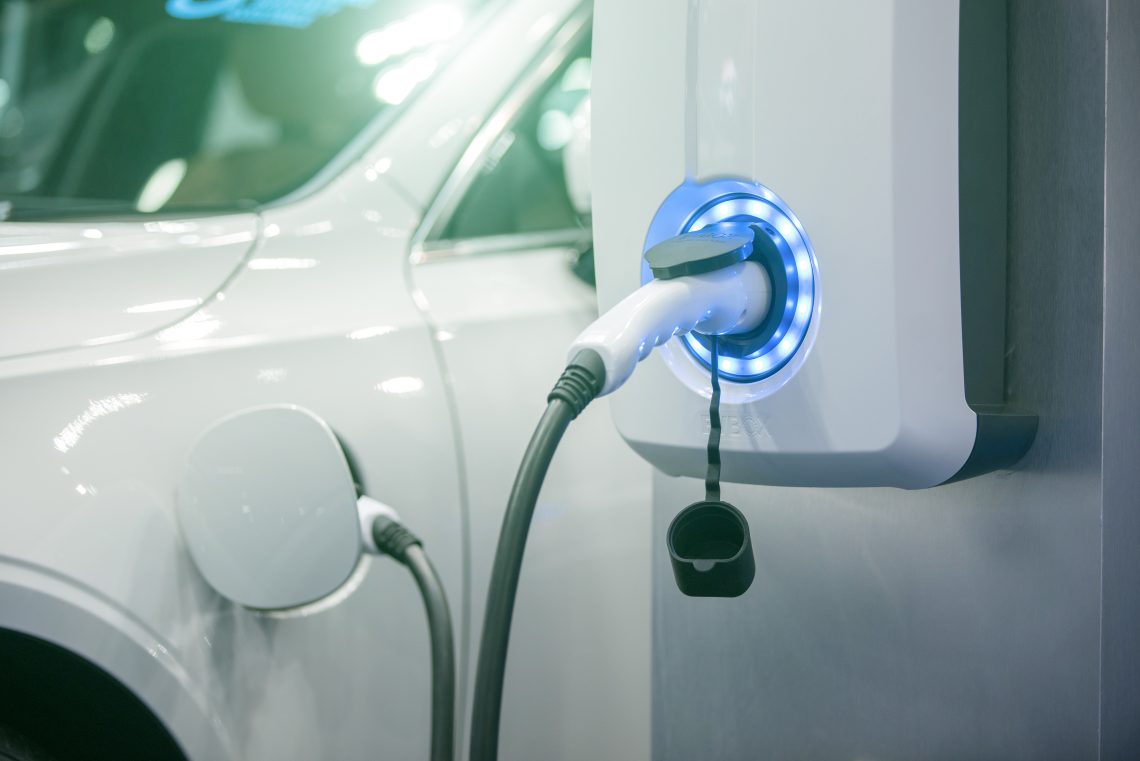The dangers of centralized science
For politicians, who desperately want to appear green to attract voters, much is at stake in the transition to renewable energy. But imposing a top-down agenda on the scientific community and industry comes with serious risks, chief among them the adoption of biased applied science to satisfy political aims.

In a nutshell
- There are major obstacles to the green transition
- Unrealistic strategies are already backfiring
- Political pressure could distort scientific research
For the past two decades at least, a majority of scientists and environmental activists have tried to raise awareness of the risks linked to climate change possibly resulting from human activity. Politicians have followed suit and gradually adopted policies transitioning away from fossil fuels so as to reduce the greenhouse gases – assumed to be the cause of global warming. The endeavor amounts to no less than a top-down revolution in energy technology. To succeed, several challenges will need to be overcome.
Decentralized vs. centralized science
Science is traditionally a decentralized process based on scientific conjectures and refutations. Knowledge evolves through criticism, which discards falsehoods. Academic freedom is essential to this decentralization, which means that no truth can be imposed from above. The same goes with applied science, which is essential to the current energy transition efforts. Entrepreneurs in these sectors must rely on sound, empirically tested results, and have to correct technological errors should they occur.
When science is centralized, the risk of distortions is high. The well-known story of Soviet scientist Trofim Lysenko – whose spurious agricultural experiments led to famine – provides a perfect example. As a good materialist Marxist, Lysenko tried to make reality fit with his theory. The tale should serve as a reminder of how political incentives can often hijack the scientific process, derailing it from its pursuit of truth.
In their current state, renewable technologies are not entirely environmentally friendly.
But centralized science is not always unsuccessful, especially in democratic regimes. For instance, centralized wartime efforts allowed scientists to invent breakthrough technologies like the radar, or even the atomic bomb – despite its consequences. The Cold War also led to the space race, with not only the Moon landing but also numerous other spin-off inventions, from freeze-dried food to fly-by-wire or emergency blankets. There are some successful examples of top-down energy transition, including the French civil nuclear program adopted in 1952 – which resulted in the country having its first nuclear plant, connected to the network in 1977. In 1990 three-quarters of French electricity was supplied by nuclear power.
In all these cases though, the testing procedures were clear and open, competing options were compared and pragmatism prevailed. These successes resulted from decentralized science (like NASA’s many private contractors) working for a centralized public project based on rational decision-making.
At a glance, the applied science behind today’s energy transition appears to belong to the same category, but some experts have doubts. Certain popular technological solutions, while not falsehoods from a purely scientific point of view, promise more than they can deliver. In many cases, they are not tested at a sufficient scale. Past successes may have resulted in overoptimism when it comes to the feasibility of a rapid transition to green energy.

Squaring the circle
Human history has seen a series of energy transitions, from wind to coal and steam, and then oil and gas. These have always been transitions from lower-density energy sources to higher-density ones. However, the green energy revolution is going in the other direction. Yet it appears unlikely that the current industrial civilization, whose vast energy needs keep on increasing, could start going in reverse. Energy is the basis for a higher gross domestic product (GDP). Less energy use means a lower GDP, thus more poverty. And renewables today represent a tiny 5 percent of primary energy use. Massive funds will need to be invested to bridge this discrepancy. In Europe, the cost was recently estimated at 11,200 billion euros over the next decade.
Despite political exhortations to a greener, simpler and more frugal lifestyle, the cost of the transition will be considerable and could prove a major obstacle, especially in poor countries. Geopolitically, it also means more dependence on China to produce materials needed for green technology, notably rare metals.
Politicians want to appear green to attract votes.
The laws of physics do not obey politics. Energy security is at stake here. There are physical obstacles to increasing electricity generation in a world that currently depends on fossil fuels for more than 80 percent of its energy. Electric vehicles (EVs) being charged from diesel generators at the COP26 summit in Glasgow illustrate the issue perfectly. Despite their greater tank-to-wheel efficiency, the net efficiency of electric engines is lower than that of thermic engines – which are to be banned in the EU as of 2035. EV batteries take a lot more time to recharge, require huge infrastructure investments and are costly to produce.
Carbon storage, an essential technology to reach net-zero emissions, is not yet within reach. Wind and solar power have intermittency issues that affect energy grids. The latter need to be updated to respond to the increased electricity consumption and stability issues entailed by those transitions. Last winter, both Europe and Texas experienced serious blackouts. To be resilient, an energy mix must be diversified. By relying solely on renewables (and potentially nuclear power), energy supply will become less secure.
Greenwashing
In their current state, renewable technologies are not entirely environmentally friendly. Wind turbines generate noise pollution, damage landscapes and kill birds of prey. Even nuclear electricity is not clean since nuclear waste has to be stored somewhere. Smart grids will require more and more electronic components. If the electricity powering EVs is generated by burning lignite, then the technology is hardly green. Entire villages of inner Mongolia are being polluted by the rush for rare metals needed for electric cars. The demand for nickel, lithium or aluminum, required for producing EVs, will increase fifty or even sixtyfold. There is no clear way to fulfill those needs in the foreseeable future. Recycling EV batteries is also problematic. There is thus a lot of greenwashing in the green transition.
Another political challenge is the creation of a biased and unaccountable “green industrial complex.” Politicians want to appear green to attract votes. The kind of stakeholder capitalism promoted by the World Economic Forum as part of its green agenda could rapidly become a form of crony capitalism. The quest for green energy has already produced a host of self-serving markets, from “experts” in renewables to dubious “sustainable” technologies receiving subsidies from a growing “green” bureaucracy.
Scenarios
A first scenario sees the energy transition working thanks to eleventh-hour innovation, both in terms of power generation and grid management. The world then enjoys greener and more inclusive growth, fulfilling the wishes of politicians and some urban, western constituencies. This new setup heavily relies on China for major green technology components. A change in geopolitical dominance becomes inevitable. Since many goods and services depend on fossil fuels, prices temporarily increase until innovations and new modes of production kick in. This state of scarcity is managed by bureaucratic governments and large firms, most probably according to the principles of stakeholder capitalism. Given the cost of the transition, sound monetary policy and democracy are gradually eroded for the sake of the “greater good.”
A second scenario is a less ambitious energy transition. Fossil fuels, especially gas, help bridge the gap between energy supply and demand. The net-zero emissions goal is not reached, but the effort is accompanied by energy-saving measures. Poor countries, unwilling to sacrifice their development, resist the initial transition. Energy generation becomes cleaner, albeit at a slower pace. Nations are allowed to increase their energy needs and therefore prosper. Because of this, they are better able to adapt to climate change and extreme weather events.
In a third (quite realistic) scenario the energy transition fails because of the challenges discussed above. A Yellow Vest-style movement emerges in protest against soaring prices, carbon taxes and energy scarcity. There are violent riots in poorer countries. World leaders, aware that the energy transition at a global scale is not feasible because of its technical limitations, make a U-turn. The supply gap is gradually brought under control thanks to oil and gas, notably shale, as well as nuclear energy. A period of stagflation follows as energy costs rise due to previous divestment from fossil fuels, causing a temporary supply shock. Governments opt for tighter monetary policy to mitigate inflation, at the price of short-term growth.
In a fourth scenario, the energy transition fails, and politicians adamantly refuse to use fossil fuels to bridge the supply gap. Major Western politicians do not acknowledge the failure and impose radical measures to manage scarcity, blaming China or profiteering. Stakeholder governance and world leaders divest from fossil fuels as promised. Energy scarcity leads to a sharp drop in GDP and rising poverty. Various policies, including governments’ response to social unrest, threaten basic freedoms and rights. Inspired by trendy economic theories, governments print money to compensate, leading to high inflation. Deglobalization follows and international tensions worsen. Within a generation, modern civilization finds itself on the brink of disaster.



